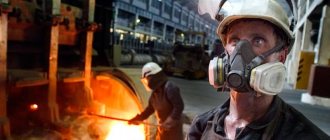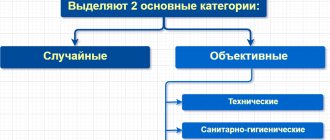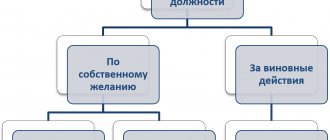All employers, without exception, are required to provide their employees with insurance against accidents, as well as temporary disability. Also, the country's legislation obliges employers to insure employees against occupational diseases. This is due to the fact that some types of work lead to chronic diseases. And an employee who has worked for many years will continue to wonder: how to register an occupational disease?
Occupational disease
An occupational disease is a dysfunction of human vital systems and organs caused by conditions or the nature of work. Many people get confused and include overwork or stress at work in this concept. This includes the work of actors. Actors live other people's lives and let their experiences pass through themselves. Because of this, oppression of the human psyche occurs. In addition, the consequences of an accident that occurred at work cannot be included in the list of occupational diseases. An occupational disease is a disorder of body functions due to constant contact in the workplace with harmful substances or various factors. The list of these diseases also includes complications that occurred due to chronic abnormalities in the human body (if there were already abnormalities). The occurrence of occupational disease depends on the organization of the employees' workplace. The issue of providing a quality workplace is not just a medical issue. Just as in order to prevent injuries, the employer must create conditions for employees. This is necessary to prevent disease. All responsibility for working conditions falls on employers. And it doesn’t matter whether it’s a government agency or a private enterprise.
What is an occupational disease
According to Federal Law No. 125 of June 24, 1998, an occupational disease is a health disorder caused by systematic exposure to harmful factors in unfavorable working conditions. This manifests itself in the dysfunction of one or another organ or vital system. The consequence of an occupational disease at work is temporary or permanent loss of ability to work (Article 209 of the Labor Code of the Russian Federation).
Detection of acute occupational disease
As previously noted, an acute occupational disease is a pathology that occurs after a single exposure to a harmful substance on the body. That is, the action occurred during one work shift.
Other occupational diseases of a similar nature may be as follows:
- CO gas poisoning
- Poisoning with methemoglobin formers
- Cyanide toxicity
- When exposed to arsenic hydrogen
- Intoxication with organophosphorus substances
- Mercury vapor poisoning
Acute occupational diseases can only arise as a result of poisoning, and if in production the use of hazardous substances was a priority, then the employee who received the pathology needs to register payments and benefits.
Diagnostics
How to register an occupational disease, where to start? In order to treat the disease, it is necessary to undergo diagnostics. Occupational pathology deals with occupational diseases. This science carries out research into the emergence of diseases due to occupational hazards. Occupational pathology issues include:
- diagnosing;
- the most optimal treatment option;
- preventative measures after treatment.
Depending on the type of disease, the sick person is referred to a specific specialist. The doctor makes a diagnosis using anamnesis. Next, the medical record of the sick employee indicates the method of treatment and features in the organization of the workplace. To date, a classification has been established of the reasons due to which workers suffer from occupational diseases.
- Biological factor.
- Periodic changes in atmospheric pressure.
- Constant fatigue of a person due to responsibilities at work.
- Working with certain chemicals.
- The presence of dust in the employee’s workplace (for example, coal, silicon dust, etc.).
- The appearance of substances of various kinds due to the processing of objects or materials at work.
- Weather conditions that negatively affect human health.
- Increased amount of humidity in the air per cubic meter.
- Constant loud noise.
- Negative environmental conditions at the place of work.
Key Aspects
In Art. 184 of the Labor Code of the Russian Federation states that in the event of damage to health or in the event of death of an employee as a result of an accident at work or an occupational disease, the employee is compensated for lost earnings and additional expenses for medical, social and professional rehabilitation.
The main law regulating the procedure and conditions for calculating payments for occupational diseases is Federal Law No. 125-FZ of July 24, 1998 (hereinafter referred to as Law No. 125-FZ).
An occupational disease is a deterioration in a person’s health that resulted from his work activity at an enterprise (Article 3 of Law No. 125-FZ). It occurs due to exposure to any harmful factors that injure the body.
The doctor who examines the patient must determine the cause of his deterioration in health. If it is directly related to work activity and conditions at the enterprise, the citizen has the right to receive compensation accruals (Article 8 of Law No. 125-FZ).
The fact that there is a connection between illness and work is recorded on the employee’s sick leave.
Important! Payments to an employee with an occupational disease are accrued only if deductions were made for him to the Social Insurance Fund (SIF). This organization compensates for the costs of treatment and maintenance of a person during the period of incapacity. If a person dies due to an accident at an enterprise, the Social Insurance Fund pays compensation to his close relatives.
Basic moments
According to the law, payment for temporary disability to an employee who is on sick leave due to an occupational disease is assigned in the amount of 100% of average earnings (Article 9 of Law No. 125-FZ). But the transferred amount is limited to four times the monthly insurance benefit.
The maximum payment amounts established by regulations are given in the table (Articles 10, 11, 12 of Law No. 125-FZ):
| One-time | Monthly | Payment for the period of temporary incapacity for work | Due to death (one-time) |
| RUB 94,018 — paid no later than 1 calendar month from the date of payment assignment | RUB 72,290.40 — paid during the entire loss of professional disability | 289 961, 60 rub. | 1,000,000 rub. |
A one-time compensation is transferred if a person is temporarily unable to perform work.
A monthly allowance may be assigned if he can no longer work in his previous position due to medical contraindications or has completely lost his ability to work.
Moreover, according to Article 13 of Law No. 125-FZ, the maximum monthly insurance payment is subject to indexation once a year from February 1 of the current year, depending on the increase in consumer prices over the previous year. So, from 02/01/2019, the indexation coefficient is 1.030 (Resolution of the Government of the Russian Federation No. 61 of 01/29/2020).
Classification of diseases
An occupational disease can be expressed in acute or chronic form. In the first case, the disease is temporary. In the second, it is observed over a long period, and a relapse may occur.
Illnesses acquired in connection with professional activities can be classified as follows:
- Biological. This may be an infection from a virus, bacteria or parasites;
- Chemical. In most cases, poisoning or burns of the skin or mucous membranes by harmful substances and chemicals;
- Physical. Occur due to prolonged exposure to increased noise or vibration on the body;
- Climatic. Caused by the harmful effects of climatic conditions on the human body;
- Social. They arise due to conditions that limit the employee’s activity. For example, they may appear due to a sedentary lifestyle;
- Ecological. They arise due to unfavorable environmental conditions in the region where the employee works.
The relationship between the emerging disease and the above factors must be proven by the conclusion of a medical and social examination. In practice, the most common occupational diseases are:
- Respiratory diseases:
- Gastrointestinal disorders:
- Damage to the musculoskeletal system:
- rachiocampsis;
- chondrosis;
- Painful skin lesions:
Also included in this category of diseases are various types of injuries received at work.
The legislative framework
The regulatory framework regulating this issue consists of the following acts:
- Federal Law No. 125 “On compulsory insurance in case of temporary disability.” Establishes rules for calculating benefits upon the occurrence of regulated circumstances based on average monthly earnings;
- Federal Law No. 255 “On compulsory social insurance in case of temporary disability.” Establishes the size and maximum amount of benefits;
- Government Decree No. 965. Applies if an employee is injured or acquires an illness that causes disability;
- Government Decree No. 286. Regulates the right to receive medical and social assistance for persons who acquired a disease or were injured in connection with work;
- Order of the Ministry of Health No. 417. Establishes a complete list of occupational diseases and injuries;
- Government Decree No. 789. Establishes the rules for determining the degree of loss of professional disability.
Source: https://lgoty-vsem.ru/posobie/vyplaty-po-profzabolevaniyam.html
Privileges
Payments from public and private companies are subject to certain conditions. How to register an occupational illness? A person receives a payment if he is diagnosed with temporary disability due to an occupational disease. The employing company is obliged to pay for the period of time during which the employee underwent treatment. Also, the amount received must be equal to the full salary. But in accordance with the law, the largest amount cannot exceed four social contributions.
What are the payments and benefits for occupational illness?
The organization makes payments for occupational illness on the basis of sick leave, according to which work duties are correlated with the final diagnosis.
The calculation of benefits is carried out similarly to standard disability compensation, taking into account some features:
- the amount of accruals is 100% regardless of length of service;
- according to the indexation of benefits and benefits for occupational diseases for 2019, from February 1, the maximum payment threshold was increased to RUB 77,283.86* monthly (while from February 1, 2018, the limit was RUB 74,097.66);
- Benefits are calculated using FSS funds.
Note! All payments assigned before February 1, 2019 must be indexed.
Calculations are based on the amount of wages accrued before the onset of illness or disability.
Payments to employees for occupational diseases
In case of professional pathologies, the following compensations are provided:
- Payments for temporary disability.
- One-time payments upon diagnosis of pathology.
- Monthly compensation for persons with loss of ability to work.
Payments are made by FSS resources. The amount of compensation can vary significantly. Let's look at the maximum payments recorded in 2021:
- About 90,500 rubles (one-time compensation).
- Approximately 70,000 rubles (monthly payment).
The maximum amount of payments is set annually by the Social Insurance Fund. In 2017, the maximum monthly benefit is 71,000 rubles, and the one-time benefit is 92,339 rubles. When calculating a specific amount, the employee’s earnings, which he stopped receiving due to pathology, are taken into account.
The Social Insurance Fund also compensates the injured person’s expenses for treatment:
- Purchasing medicines.
- Payment for paid care, if necessary.
- Rehabilitation in sanatorium conditions.
- Manufacturing and repair of prostheses.
These payments are made only with the decision of the Social Insurance Fund. They are preceded by checking the necessity of all treatment measures taken.
Compensation is also provided for accidents and deaths caused by production factors. In the latter situation, the employee’s relatives receive payments.
Pensioner and design features
How to register an occupational illness for a pensioner? Often, when citizens apply, employees of medical organizations may refuse to undergo an examination due to the fact that the sick person is a pensioner and has not worked for a long time. This refusal is not justified, since there is no statute of limitations for occupational diseases. Thus, in accordance with the legislation of the country, a person can submit a request in order to undergo diagnostics and determine the presence of the disease. If a person encounters a similar situation, he can remind employees that they are breaking the law with their response.
How to register an occupational illness for a pensioner if he has received a refusal to pay? If, based on the results of the collected documents, the former employee received a refusal, then he will be able to file a complaint in court. It is worth remembering that the appeal period is three months. Therefore, it is necessary to quickly collect all available documents and certificates and file a claim in court. If the court considers that the refusal is not justified, then the person will be able to count on further payment.
How to register an occupational disease, where to start
Diseases acquired during the performance of work duties by an employee are classified as occupational. At the same time, the state guarantees every citizen the right to safe working conditions, as well as monetary compensation. This article reveals in detail the question of how to register an occupational disease, examines the main stages of the process, determines how to diagnose an occupational disease at the initial stage, as well as what benefits and funds are provided for compensation for harm caused.
Features of diagnosing occupational diseases at the initial stage
An occupational disease receives the status when it is proven that it occurred as a result of working in hazardous working conditions. However, how can we determine that poor health is caused precisely by negative factors in the workplace?
First of all, you need to study the regulations relating to the content of occupational diseases and poisonings. These in Russia are:
- letter of the Social Insurance Fund “On sending a review on the examination of insurance cases in connection with an occupational disease” dated April 29, 2005 N 02-18/06-3810;
- Decree of the Government of the Russian Federation “On approval of the Regulations on the investigation and recording of occupational diseases” dated December 15, 2000 No. 967;
It is important to remember that this type of disease has no statute of limitations. It is possible to prove that the disease occurred due to negative factors at work at any time, even if the employee quits and no longer works at the enterprise.
In such circumstances, few people will want to pay compensation for damages to a former employee, but the law obliges the employer to provide it. The process may drag on and may end up in litigation.
The main stages of registration of an occupational disease
An employee who has received a diagnosis of an occupational disease will ask the question: “How to register an occupational disease and where to start?” First of all, you need to prepare for the fact that the process will not be quick, since the investigation takes a long time.
As you know, the first step to registration is to go to a medical institution, where you need to undergo an examination and receive an initial diagnosis.
Next, the hospital where the citizen turned for help is obliged to notify the employer where the victim worked or works with a special notice. In addition, such a notification is also sent to Rospotrebnadzor.
Having received such a notice, the enterprise is obliged to check within 24 hours the working conditions of the victim and the place of his actual work. Based on the results, a special characteristic is compiled.
The employer is required to create a special commission to investigate a case of occupational disease. It includes a representative of the employer, a trade union, representatives of the sanitary and epidemiological supervision body, as well as a labor protection specialist. The presence of the victim himself is permitted, but not required.
Characteristics of working conditions are part of the investigation, to the materials of which the employer’s objections may be attached in case he does not agree with the commission’s conclusions. Upon completion of the investigation, the commission must draw up an investigation conclusion.
The inspection materials are sent to the health authority for study. It is there that a detailed study of the obtained facts takes place, the result of which is confirmation or refutation of whether the disease was caused by negative working conditions or not.
Often, the employer is not interested in the employee registering the illness as occupational. Because of this, he may not provide a certificate of employment or otherwise interfere with the process. Such actions are illegal and can be appealed in court.
Completion of registration of occupational illness, payment of benefits
The state protects the health of its citizens and also creates conditions for the speedy treatment of occupational diseases. Having completed the registration of the disease, the employee can receive compensation for harm caused to health.
It is known that it is possible to identify an occupational disease when a person consults a doctor. The Center for Occupational Pathology sends the patient for a special examination, during which the degree of disability is determined.
To correctly complete the procedure, it is important to save all related documentation, including checks and receipts. The benefit can only be accrued to the employee who provides a complete package of documents, including sick leave.
According to current legislation, the severity of the disease is determined by a percentage. This figure is extremely important for the Social Insurance Fund, since the amount of compensation directly depends on it. The drawn up act is sent to the employer, because it is he who makes the final payment of funds.
It is important to understand what types of compensation are provided for by Russian legislation:
- Monthly allowance.
- One-time payment.
- Sanatorium treatment with reimbursement of expenses.
Having completed the registration of the occupational disease and confirmed its status, the employee contacts the social insurance department and provides originals and copies of the following documents:
- Passport of a citizen of the Russian Federation.
- Act on occupational disease, clinic conclusion.
- Employment history.
- Salary certificate.
- Conclusion about the insured event.
The process of processing payments is handled by employees of the social insurance department. In the presence of a representative of this organization, a statement is written, after which an analysis of the insured event is carried out, during which the size and type of payment is determined.
An employee may become disabled due to illness. In this case, in addition to payments, he is entitled to certain preferences related to the provision of additional rest, pensions, and so on.
An occupational disease entails loss of ability to work, so the employer is primarily interested in preventing the development of such illnesses. Treatment of the disease will not be necessary if high-quality prevention is carried out and the disease is simply prevented.
An unscrupulous entrepreneur, on the contrary, will shirk responsibility and prove that there are no negative factors in the workplace.
In conclusion, it should be noted that one should prove one’s case at the very initial stage of registering an occupational disease. By ignoring any stage indicated above, the employee risks not receiving the payment required by law for treatment and other preferences. ( 11 votes, 4.60 out of 5) Loading…
Source: https://delatdelo.com/organizaciya-biznesa/kadry/kak-oformit-profzabolevanie.html
Dismissal of an employee
How to register an occupational illness after dismissal? The country's legislation has established that the presence of an occupational disease must be investigated at the enterprise where the employee was influenced by any harmful factor that caused negative consequences. The employing company will become responsible for investigation and payment, even if the person works elsewhere. This is due to the fact that symptoms of the disease may take many years to appear.
Legislation
Which workers may develop an occupational disease (list of professions), what responsibilities do employers have, are there state guarantees for sick citizens - these and other points are stipulated in several regulations of the Russian Federation:
- general information is provided by the Federal Law “On compulsory social insurance against accidents at work and occupational diseases” dated July 24, 1998 No. 125-FZ;
- The procedure for registering an occupational disease is established by the Regulations on the investigation and recording of occupational diseases, approved. Decree of the Government of the Russian Federation No. 967 of December 15, 2000;
- Resolutions of the USSR Cabinet of Ministers dated January 21, 1991 and the Council of Ministers dated August 22, 1956 approved two lists of positions and professions that were entitled to additional leaves, early pensions, and other benefits. List No. 1 contains professions identified by the Ministry of Labor as particularly difficult and dangerous. List No. 2 indicates specialties that negatively affect the health of employees, but are not considered particularly harmful;
- Order 417n is a list of occupational diseases, upon detection of which an investigation is initiated, the employee is provided with additional benefits, and free medical care is provided.
Hearing related diseases
How to register an occupational disease based on hearing? There is an algorithm of actions in order to receive payment due to illness.
You need to go to the clinic and see a general practitioner. Next, he will refer the sick person to undergo examination by various specialists. He may also request certain types of tests. Based on the diagnostics, specialists will make a diagnosis. After confirming the diagnosis, the sick person needs to visit Rospotrebnadzor, and employees will examine the place of work and draw up an appropriate report. It is necessary to take an extract drawn up by a labor safety inspector. Next, the employee needs to request from his employer a commission report on the work carried out directly by this employee. After receiving all reports, extracts and conclusions, you must contact the Professional Medical Pathological Center. Also, specialists at this medical center may request additional tests and be examined again by any doctors. Based on their conclusion, a decision will be made on the possibility of paying benefits related to illnesses.
How to register an occupational disease based on hearing if you are already a pensioner? If the employee is a pensioner, then the algorithm of actions does not change. But the difficulty of registering an occupational disease is to prove the existence of the disease due to work. For any employer, such actions are additional costs. Therefore, they will interfere with the design in every possible way. If a pensioner can prove the presence of a disease due to work in a certain place, then he will be able to receive payments.
Where to go and what is needed?
The very concept of an occupational disease can be considered exclusively in relation to those employees who are officially employed. Such persons may include employees registered under an employment contract, those who perform their duties on the basis of a civil contract, students of institutions and students, convicted citizens involved in work, persons hired by individual entrepreneurs. When signs of illness are detected and the illness is subsequently diagnosed, the need to confirm the existence of a connection between working conditions and such a state of health is caused by the opportunity to obtain:
- One-time payment (compensation) for causing harm to health;
- Permanent compensation, which will be transferred monthly if, as a result of illness, the employee partially loses his ability to work;
- Possibility of receiving full compensation for sick leave, regardless of the number of years worked (work experience);
- Obtaining social guarantees provided for by law;
- The right to be employed in easier work;
- Possibility of subsequent employment in situations where staff reduction occurs;
- Receiving additional leave in excess of the days required by law;
- Receiving funds in the form of compensation for the costs that occurred during treatment.
In some situations, it is quite difficult to prove an occupational disease; moreover, for the organization or enterprise itself, such a situation is not profitable, since it actually means incurring additional expenses associated with the transfer of funds for various needs of the employee demanding compensation. Milder cases (from the point of view of proving the fact of an occupational disease) are those in which the employee’s illness is in an acute form. On the other hand, even chronic forms, which are characterized by a milder course, can, if there is certain evidence, be recognized as professional. First of all, if you need to prove an occupational disease, you will need to collect the documents required in such cases. So, you will need:
- Extract from the medical history - such a document must be filled out by the therapist of the area to which the patient belongs at the registration address;
- Conclusion provided by the trade union to which the employee belongs (form);
- Conclusion on the patient’s working conditions (sample);
- A report drawn up by a special commission on the conditions under which the employee worked (standard form);
- Patient's passport;
- Application for establishing a connection (in free form).
In order to receive a document indicating the existence of a connection between the disease and prof. activity, first of all, you will need to contact your local physician, who will make an entry in the medical record and prescribe special tests aimed at diagnosing the employee’s illness. When undergoing tests, you need to obtain information in advance about the validity period of the results - as a rule, in most cases they range from 14 to 30 days. If results are provided earlier, you will have to undergo the examination again. After receiving them, the patient visits the local doctor again and receives a general statement in which all the data will be recorded. If the employee is undergoing hospital treatment, then the basis for establishing a connection between the disease and professional activity may be an extract from the medical history, signed by the chief physician.
After receiving an extract from a local physician or the head physician of a hospital institution, in most cases, additional conclusions from narrow specialists are required, which can indicate the nature and specificity of the disease. Next, the patient contacts the trade union of the institution where he is employed to obtain an opinion on the nature of the working conditions. Having collected all the documents, the final stage of establishing communication is the passage of a medical and social expert commission, which makes a decision on the connection of a specific disease with harmful or characteristic working conditions and draws up a medical report.
Regression
How to apply for recourse for an occupational disease? In order to file a recourse, it is necessary to prove that there was a complete or partial loss of ability to work due to the fact that the person began to develop an illness as a result of work. Thus, recourse is compensation from the employer expressed in cash. The amount of recourse payment will be calculated based on the percentage of loss of ability to work and the average salary of a person.
How to file a recourse for an occupational disease in Russia? In order to obtain a recourse, you must send documents to the Pathology Center. This center must establish the existence of a relationship between the disease and a person’s work. Next, the Center issues a referral to the person for a medical and social expert commission. This commission carries out its activities through the social protection management system. The sick person must submit a number of documents to the commission.
- A certified copy of the work record.
- A statement from the employer confirming that an investigation was carried out.
- The employee must also provide sanitary and hygienic characteristics of all existing workplaces.
- A copy of the sick person’s medical outpatient card, as well as various documents containing information about diseases and medical examinations.
- The direction issued by the Center.
- Passport.
After receiving all the necessary documentation, the commission determines the percentage of disability. Moreover, the percentage of loss can vary from 10 to 100%. If the commission makes a positive decision regarding a sick employee, then it is obliged to send a certified act to the Social Insurance Fund and the employing company. Moreover, the act must be certified by all experts who participated in the decision making.
To determine the appropriate payment, a person’s average earnings are calculated and the use of various benefits, including maternity subsidies, is taken into account. During the calculation, information about the employee’s sick leave is also used. If various types of bonuses, allowances and regional coefficients were used in an employee’s salary, then they are taken into account.
Recording and investigation of occupational diseases at work: procedure
Employees who have been diagnosed with a disease included in the list of the Ministry of Health are entitled to compensation. To receive them, the employee must confirm that his illness is associated with the influence of harmful (hazardous) production factors. The investigation process must be initiated by the medical facility (hospital or clinic) where the worker is being observed.
In case of acute occupational illness
When a preliminary diagnosis of “acute occupational disease (poisoning)” is established for a patient, the medical institution within 24 hours sends an emergency notification of the occupational disease to the Center for State Sanitary and Epidemiological Surveillance (TSGSEN) and a message to the employer. Rules for issuing a notice can be found in Order of the Ministry of Health No. 176 dated May 28, 2001.
The Center for State Sanitary and Epidemiological Supervision, which has received the notification, within 24 hours from the moment of its receipt, begins to clarify the circumstances and causes of the disease, upon clarification of which it compiles a sanitary and hygienic description of the employee’s working conditions and sends it to the clinic to which the employee is attached. In case of disagreement with the points of the characteristics, the employer can formalize his objections in writing by attaching his statement to the paper.
The final diagnosis of the patient can be made by the clinic. Doctors examine the sanitary and hygienic characteristics and assess the patient’s condition. After this, a medical report is issued.
In case of chronic illness
The establishment of an occupational disease is carried out in the following order:
- At a medical institution, doctors conduct an examination of the patient and establish a preliminary diagnosis. The results obtained in the form of a notification are sent to the Center for State Sanitary and Epidemiological Supervision and to the employer. The deadline for sending notifications in the chronic form is 3 days.
- Within 2 weeks from the date of receipt of the notification, the Center for State Sanitary and Epidemiology provides the medical institution with a sanitary and hygienic description of the employee’s working conditions.
- If a chronic disease is detected, the patient undergoes additional examination. To do this, the medical institution sends the employee to the Occupational Pathology Center within a month.
- After examining the patient and reviewing available documents (referrals from the medical institution, characteristics of sanitary and hygienic working conditions, copies of the work record book, extracts from the outpatient card, medical examination data), specialists from the Center for Occupational Pathology establish a final diagnosis. After this, they draw up a medical report and send a notification within three days:
- to Rospotrebnadzor;
- employer;
- insurer (FSS);
- to the medical institution that referred the patient.
Medical report on the presence of an occupational disease:
- issued against signature to the employee;
- sent to the insurer (FSS);
- sent to a medical facility.
Regression for mine workers
How to apply for recourse for an occupational illness for a miner? Usually, workers in heavy types of work apply to the commission to obtain recourse. Such work also includes the profession of a miner. Registration of recourse for a miner occurs according to the above-described algorithm of actions. Just like when filing a recourse for another profession, there is the difficulty of proving the presence of an illness. In order to ultimately achieve payment, you need to be aware that actions require a long time. Since it is necessary to collect many acts, certificates and directions. And in order to receive them, you need to contact several organizations.
How to file a recourse for an occupational disease if the boss at work does not issue a certificate? The management understands that if the employee receives a positive response to the recourse, the company will have to pay additional money. Therefore, some companies refuse to issue a particular document, saying that the disease is not professional. In this case, the employee can safely turn to the courts for help. After all, without a certificate from the place of work, he will not even be able to send documents for investigation.
How to prove an occupational disease after dismissal: sequence of actions
First of all, occupational diseases include work at chemical plants, metallurgical enterprises, mines, etc. Diseases of this kind can appear in a person as a result of the influence of harmful substances on the human body. Workers who work in risky and harmful production conditions sometimes suffer from disability, that is, chronic diseases.
Such harm to health is compensated to citizens in the form of monthly payments or some kind of financial assistance. But in order to receive these payments, you must first prove the nature of your illness and the fact that you received it precisely due to the peculiarities of your working conditions.
This all needs to be done as quickly as possible so that there are no complications later. In this article we will tell you the course of successive steps in such situations, and how to prove an occupational disease in court.
Sequencing
First of all, you need to prove that the cause of your illness is precisely the professional characteristics of your work.
But the management of the enterprise is trying to prevent this, because the life and health of workers rests with the manager.
You need to have strong evidence before registering an occupational disease.
Then you need to contact your local physician for a full examination.
If you are being examined by a doctor of a specific profile regarding your disease, then he needs to write in detail about the course of your treatment with symptoms, the time you spent on his register, etc. You will need this when going to court.
Your GP should then refer you for an assessment.
You need to take into account that the tests you will go there with must be more current, so that they do not exceed two weeks from the date of submission of documents.
Pension
How to apply for a pension due to occupational illness? In order for an employee to receive a pension due to illness, he must pass a commission. The response from the commission will be compiled based on the documents received.
- Employee medical record.
- Passport.
- Data on the examination conducted by specialists.
- Direction from the Center.
- An act signed by a labor inspector on the condition of the employee’s workplace.
- Conclusion from the enterprise.
If, based on the documents, the commission gives a positive answer, then the employee is given a conclusion. Based on this document, the person will subsequently be able to receive disability and further assistance from the state.
What influences the occurrence of PZ?
The regulation of the health of industrial workers is carried out by a number of regulatory legal acts, including Federal Laws “On Compulsory Social Insurance” No. 125, “On Sanitary and Epidemiological Welfare” No. 52, “On the Fundamentals of Labor Safety” No. 181, resolutions of the Government, the Ministry of Labor, Rospotrebnadzor and so on. Order of the Ministry of Health and Social Development of the Russian Federation No. 302n dated April 12, 2011 approved the list of hazardous production factors that affect the conduct of mandatory medical examinations within established periods of time. These factors include:
- Chemical;
- Biological;
- Labor process;
- Physical.
For each factor, the frequency of examinations by specific medical specialists is provided, a set of laboratory tests is established that must be completed, and contraindications to work are also listed. For example, a labor process factor is working with optical instruments. According to the Order, such employees are required to undergo a medical examination once every 2 years by an ophthalmologist and, according to his indications, by an allergist and neurologist. Contraindications for working in such conditions include various eye pathologies, including myopia, astigmatism, and so on.
The category of physical factors includes different types of radiation (ultraviolet, ionizing and others), vibrations, industrial noise, air temperature, gravity, environmental pressure. In the last 2 cases, medical examinations are required once a year by at least 7 specialists, and ultrasound examinations are mandatory. The list of contraindications for such work is huge. Biological includes interaction with toxins, poisons, dust, viruses (including hepatitis, HIV), respectively, in most cases the frequency of medical examinations is once a year with at least 6 specialists, including an infectious disease specialist, an allergist, an oncologist, an ENT specialist, a neurologist and etc. Persons with respiratory diseases are strictly not allowed to participate in such activities.
Chemical factors have the most extensive list of circumstances and substances, when working with which citizens are required to check their health once or twice a year. Such factors are divided into 3 subtypes: the first includes substances that have a pronounced effect on the human body (carcinogens, silicates, aerosols, etc.), the second includes chemical compounds (ammonia, aluminum, chlorine and others), and the third includes complex chemicals. mixtures (pesticides, synthetic polymeric materials, etc.). Of course, the main study that workers in this field must undergo is a study of respiratory functions and blood tests.
Diseases of the musculoskeletal system
Joint-related disease usually occurs in middle-aged people. The affected area of the body depends on the type of work. For example, if the disease has settled on the hands, then the person constantly keeps his hands tense or his work requires quick action. If pain occurs in large joints, then the employee is engaged in hard work.
How to register an occupational disease related to joints? The process of action to receive payment is similar to the previous description. That is, a person must undergo diagnostics, take a referral from the Center and receive a positive response from the commission. But the difficulty in confirming the presence of an occupational disease is that diseases of the musculoskeletal system can be not only due to the work performed. Sometimes the disease manifests itself as a result of infection. Therefore, in order to receive a positive answer, it is necessary for employees from the Center to indicate that the disease is occupational. In this case, the employee will be able to receive sick pay.
Classification of occupational diseases
The level and period of exposure to harmful factors gives grounds to classify occupational diseases into such types as acute and chronic. The former means those that are provoked by a loading dose of a substance hazardous to health during its one-time impact on the body.
Safe working conditions: what is it, definition
Chronic disease involves the duration of exposure to harmful factors when performing professional duties. Its course is protracted. In some cases, the consequences may be long-term (for example, carbon monoxide intoxication manifests itself in persistent organic changes in the central nervous system).
Note! In the acute form, the influence of harmful production factors becomes obvious, and therefore the connection with the disease is easier to prove.
Professions at risk of contracting occupational diseases include, first of all, workers of large production enterprises with aggressive nature of harmful factors; teachers suffering from systematic nervous stress; health workers servicing X-ray equipment; persons who are constantly in contact with food. This category also includes drivers, miners, welders, divers, and steeplejacks (Order No. 302n of the Ministry of Health and Social Development of the Russian Federation).
Types of occupational diseases
The International Labor Organization (ILO) Convention No. 121 of 1964 first established a List of Occupational Diseases. In 1980, the 66th International Labor Conference updated this List. However, there is still no generally accepted and unified classification of occupational diseases. Each country - a member of the International Labor Organization - establishes its own list of occupational diseases and determines measures for their prevention and social protection of victims.
In the Russian Federation, there is a List of Occupational Diseases, approved by Order of the Ministry of Health and Social Development of Russia dated April 27, 2012 N 417p. This list is the main document that is used when establishing a diagnosis of an occupational disease, its connection with the work or profession performed, when resolving issues of examination of work ability, medical, social and labor rehabilitation, as well as when considering issues related to compensation for damage caused to an employee by damage to health. This list of occupational diseases includes diseases that are caused exclusively or predominantly by exposure to harmful, hazardous substances and production factors.
The most common types of occupational diseases are:
- diseases (intoxication) caused by exposure to chemical factors with primary damage to the respiratory system, blood system, nervous system, hepatobiliary system, kidneys and urinary tract;
- diseases caused by exposure to industrial aerosols;
- diseases caused by exposure to physical factors;
- diseases associated with physical overload and overstrain of individual organs and systems;
- diseases caused by biological factors;
- allergic diseases;
- neoplasms.
Depending on the level and duration of exposure to harmful substances and factors, the following are distinguished:
- Acute occupational diseases;
- Chronic occupational diseases.
Acute occupational diseases (poisonings) include forms that develop suddenly, after a single (during no more than one work shift) exposure to harmful and dangerous production factors, the intensity of which significantly exceeds the maximum permissible concentration and maximum permissible limits.
Chronic occupational diseases include those forms of diseases that arose as a result of prolonged exposure to harmful, hazardous substances and production factors.
Chronic should also include immediate and long-term consequences of occupational diseases (for example, persistent organic changes in the central nervous system after intoxication with carbon monoxide), some diseases that developed long after cessation of work in contact with unfavorable production factors (late silicosis, berylliosis, papilloma of the bladder etc.), as well as diseases in the development of which an occupational disease is a background or a risk factor (for example, lung cancer that developed against the background of asbestosis, silicosis or dust bronchitis).
Registration of the disease in Nefteyugansk
Where to register for an occupational disease in Nefteyugansk? In order to register a work-related illness, you must contact the Center for Occupational Pathology. But there is no such Center in Nefteyugansk. You can send documents to the Center of a nearby city. In order to be able to apply to another city other than the place of registration, you must initially prepare all the documents. Also, in his city hospital, a therapist can tell you which Center is best to go to. In cities such as Surgut and Khanty-Mansiysk, there are Pathology Centers that have proven themselves over the years.
How to make an application
Natalia
Labor expert
The statement of claim is drawn up in writing - on paper, or in electronic form. When drawing up this document, the employee must adhere to a certain structure that has developed in legal practice, and also include in it the mandatory information established by Art. 131 Code of Civil Procedure of the Russian Federation.
Thus, the application must contain:
- "header" in the upper left corner. This part of the document indicates:
- Name of the court;
- Information about the parties and the representative of the plaintiff, if any.
- Document's name;
- Introductory part. In this part, you need to describe in as much detail as possible all the circumstances relevant to the case, including:
- Where and in what position does the plaintiff work;
- Under what conditions does it work?
- What factors led to him receiving an occupational disease;
- Confirmation of circumstances. Each circumstance referred to in the claim must be confirmed. So, for example, when indicating in the application that the plaintiff works in a certain organization, it is necessary to indicate a document on the basis of which this fact is confirmed - the number and date of the employment contract. In the same way, all other circumstances specified in the claim must be confirmed.
- Plaintiff's claims. The statement of claim must necessarily contain specific demands to the court. And this is one of the most important parts of this document, because it is on this basis that the court ultimately makes a decision to satisfy the claim or to refuse to satisfy it.
- List of documents. According to Art. 132 of the Code of Civil Procedure of the Russian Federation, along with the claim, you must submit documents confirming the information and information set out in it. All these documents must be listed in the statement of claim itself.
The statement of claim must be signed either by the employee himself or by his representative, vested with such right by a written power of attorney certified in the manner prescribed by law.
An example could be:
- toxic anemia, hepatitis;
- radiation sickness, lesions;
- radiculitis, diseases of the nervous system.
The list of occupational diseases is a document with which you can confirm the diagnosis. Based on this, the commission issues a verdict of incapacity for work.
| Didn't find the answer? Ask your question to lawyers 8835 lawyers are waiting for you Quick response, free! |
| RECORDING AND INVESTIGATION OF OCCUPATIONAL DISEASES |
Documents for registration of occupational diseases
An occupational disease is a chronic or acute illness of an employee resulting from exposure to harmful production factors and resulting in temporary or permanent loss of professional ability. An acute occupational disease (poisoning) is understood as a disease that is, as a rule, the result of a single (for no more than one working day, one work shift) exposure of an employee to a harmful production factor (factors), resulting in temporary or permanent loss of professional ability to work.










